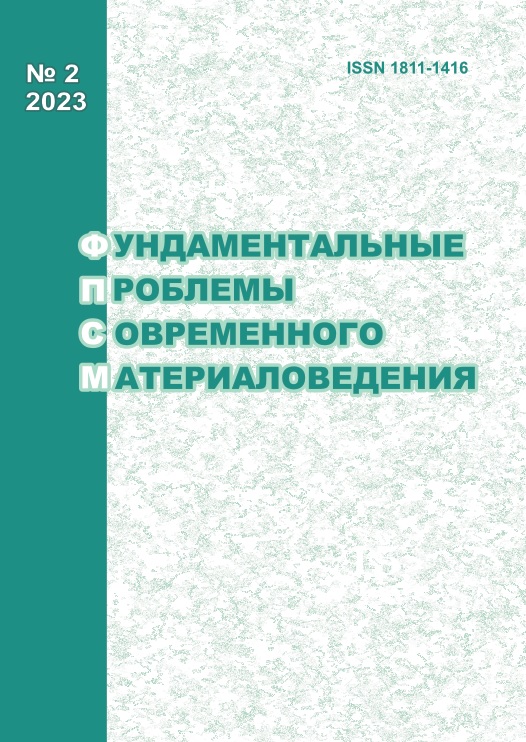ELECTRON-MICROSCOPIC ANALYSIS OF THE CONTACT ZONE OF A COATING FROM A HIGH-ENTROPY AlFeCoCrNi ALLOY ON A SUBSTRATE FROM 5083 ALLOY AFTER IRRADIATION WITH ELECTRON BEAMS
10.25712/ASTU.1811-1416.2023.02.001
Keywords:
contact zone, high-entropy AlFeCoCrNi alloy, substrate, 5083 alloy, electron beams, structure, phase compositionAbstract
Using the WAAM-Wire Arc Additive Manufacturing method on a 5083 aluminum alloy substrate a coating was formed from a high-entropy alloy (HEA) AlCrFeCoNi of a non-equiatomic composition (mass %: 15.64 Al; 22.31 Fe; 7.78 Co; 8.87 Cr; 44.57 Ni). Using scanning and transmission electron microscopy analysis of structure, phase and elemental composition, defective substructure of the contact zone was carried out after irradiation with low-energy electron beams with the following parameters: electron beam energy density 30 J/cm2, pulse duration 200 µs, number of pulses 3, pulse repetition rate 0.3 Hz. It is shown that irradiation leads to fragmentation of the material by microcracks. The formation of a multiphase, multielement submicron nanocrystalline structure, formed mainly in the substrate, which has a low melting temperature compared to HEA, was revealed. The microdiffraction analysis using the dark-field imaging method showed the formation of Al3Ni grains and aluminum-based solid solution. In the volume of Al3Ni grains, there are Fe2Al5 particles, the size of which varies within (35-70) nm. Mutual doping of the coating and substrate is established. The dislocation substructure formation, which is caused by thermal stresses during irradiation with electron beams, is represented by nets with a scalar dislocation density of 2.1 1010 cm-2.











 Journal «Fundamental’nye problemy sovremennogo materialovedenia / Basic Problems of Material Science»
Journal «Fundamental’nye problemy sovremennogo materialovedenia / Basic Problems of Material Science» This work is licensed under a
This work is licensed under a 
